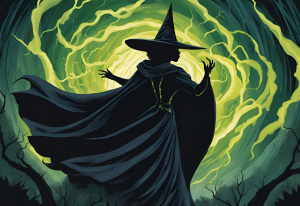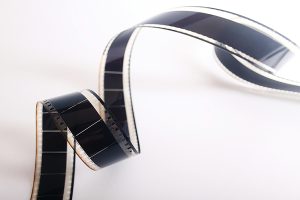From 2004 to 2010 Disney went on a hiatus from its trend of making wonderful and memorable films. Mediocre productions eclipsed the critical and financial streak of success absorbed in the 90s. Films like Home on the Range and Chicken Little suddenly took up the Disney banner, shoving films such as Beauty and the Beast, The Lion King, and The Little Mermaid aside.
Suddenly, Disney became forgettable. Disney became childish. It strived to compete with DreamWorks by following its recipe of pop culture jokes and dumbed down humor. The company that had previously given the world unforgettable characters and songs suddenly began spitting out horrendous films and characters. For a moment, Disney forgot who they were.
DreamWorks wasn’t catering towards the film critic. The difference is, DreamWorks strictly aims to make children laugh and keep them entertained all while tickling their parents’ funny bones with a subtle reference to Cheers or Castaway. Disney’s duty, on the other hand, was to captivate the audience with its characters, music, scores, and settings. Shrek did what Disney did with Aladdin—they hired big time actors to do voice over work and laced the film with pop-culture references. Both Aladdin and Shrek worked. Aladdin wasn’t overly saturated with the Genie’s antics—it had a heart and a story. Genie just helped the film pop. Shrek worked because it was presented strictly as satire—a satire of Disney itself. DreamWorks cemented itself as comedy. Much like Aladdin, some DreamWorks films successfully fuse both comedy and drama.
Disney borrowing from DreamWorks is, essentially, Disney borrowing from Disney. DreamWorks took what Disney did in Aladdin and they built an empire on it. With Disney slipping in the early 2000s, it’s no wonder that they looked to DreamWorks for inspiration—those movies were making money. The problem, however, is that Disney isn’t DreamWorks. Film after film, they failed to live up to DreamWorks’s success or the success of their own past.
Jump to 2009. We’re given The Princess and The Frog—Disney’s attempt to revisit their past. This type of film, a cartoon musical, is what elevated the company to a position of power. While The Princess and the Frog didn’t flop, it definitely didn’t strike the chord Disney had predicted it would strike. Why? Princesses. Princesses are what propelled Disney to create The Princess and the Frog. Although their films fell in quality and sales during the 2000s, their princesses sold. Little girls still wanted to be Ariel and Cinderella. So, why did The Princess and the Frog not live up to its expectations? The word “princess.” The word “princess” scared little boys away.
Thus, their next film altered its title. Rapunzel became Tangled. This was Disney’s second attempt at milking the ghost of their cash cow, and it worked. The name change brought a greater influx of boys. In addition, by making it a CGI musical, Disney bridged the gap between the their company past and the present.
With Tangled’s success, of course, they were going to try for round two. In comes Frozen, an adaptation of Hans Christian Andersen’s The Snow Queen that introduces sisters Anna and Elsa. To say Frozen was successful is an understatement. In awards season Frozen took home two Oscars, a Golden Globe, and five Annies (prestigious animation awards). All the praise accompanies its sales: over one billion dollars in worldwide ticket sales (currently making it the 15th highest grossing film of all time).
The film echoed Disney’s past in all the right ways. Then, we get the songs that swarmed the Internet. “Do You Want to Build a Snowman?” is the first song in the film and sets the tone for the entire movie: comedy and drama. Laughs and feelings—exactly the concoction that Disney is successful in brewing. Then we have “Let it Go”—the power ballad. The electric “Defying Gravity” of the film. The music was specifically composed to mesh with the force of snow and winter—it grows in intensity as Elsa’s magic changes from flurries to icy crystals.
The music is a key contributing factor in Frozen’s success. With the music, the characters are revealed to the audience. These characters are realistic, believable, and relatable. The film has become so successful partially based on the “word of mouth” review. The characters and music blend together into an unstoppable wind that blows money into Disney’s pockets, inflating their reputation, all while seeping into the audience’s emotional crevices. Thus, Frozen’s blizzard has covered the company’s muddy tracks, burying the Chicken Little characters in the snows of a should-be forgotten history.


















Be First to Comment